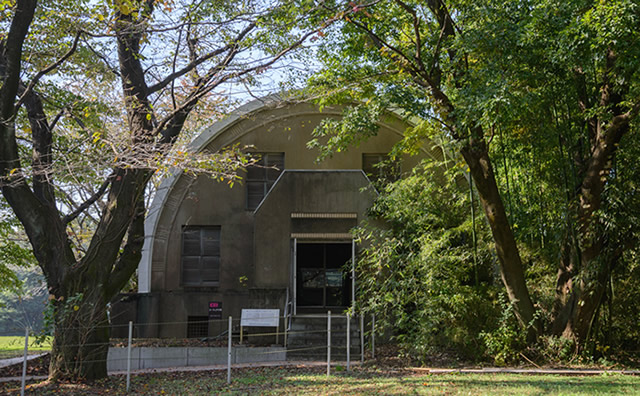Gautier Meridian Circle Building
A Meridian Circle That Survived the Great Kanto Earthquake

A meridian circle is a telescope specifically designed to measure the precise positions (the right ascensions and declinations) of celestial bodies transiting the meridian. This instrument can therefore only rotate along the meridian plane (from north to south).
The Gautier Meridian Circle was manufactured in France in 1903 and was bought for about 20,000 yen in 1904. The meridian circle was tested for a while in Azabu Ward, where Tokyo Astronomical Observatory (TAO) was located at that time. But in 1924, after TAO’s relocation to Mitaka Village, it started operations as one of the main instruments of Mitaka Campus. Thanks to being carefully packed for the relocation, the meridian circle survived the Great Kanto Earthquake of 1923.
The meridian circle was used to visually inspect the positions of the Moon, planets, and stars for a long time, but retired from the frontlines in 1982 when the Photoelectric Meridian Circle (PMC) was built. But in 1992, equipped with a new CCD micrometer, the Gauthier Meridian Circle worked again, and for about ten years measured the precise positions of quasars and other faint objects.
The Gautier Meridian Circle Building was built in 1924. Its design was intended to combine two different elements—a semicircular roof and a trapezoidal entrance—into a beautiful harmony.
About
| Aperture | 20 cm (8 in) |
|---|---|
| Focal Length | 310 cm (122 in) |
| Purpose | Precise positional observations of celestial objects |
| 1924 (Taisho Year 13) | Completed |
|---|---|
| 1983 (Showa Year 58) | Visual observations ended |
| 1992 (Heisei Year 4) | Equipped with a CCD micrometer |
| Around 2000 | Retired from operation |
| April, 2014 (Heisei Year 26) | Listed as a Registered Tangible Cultural Property |